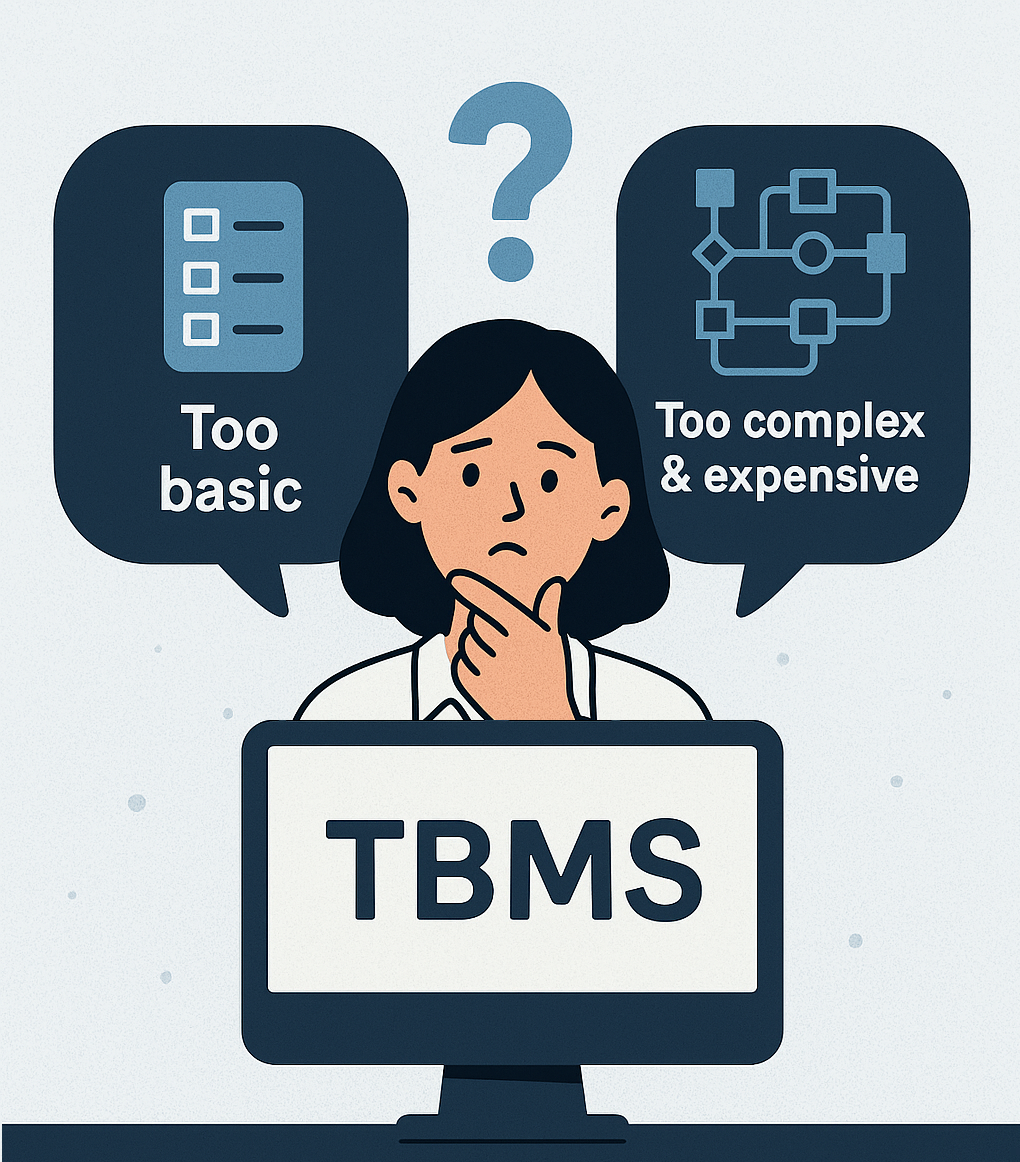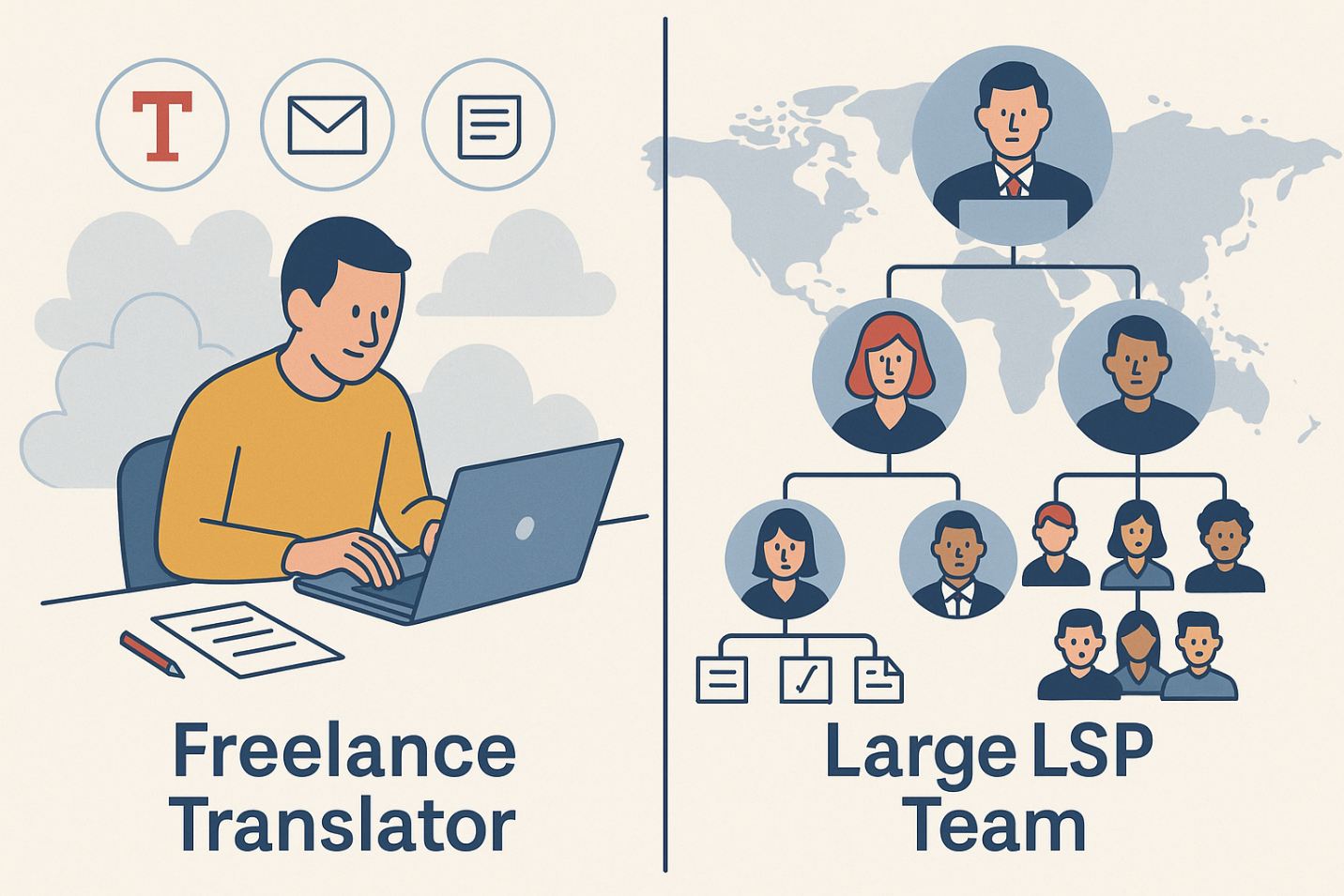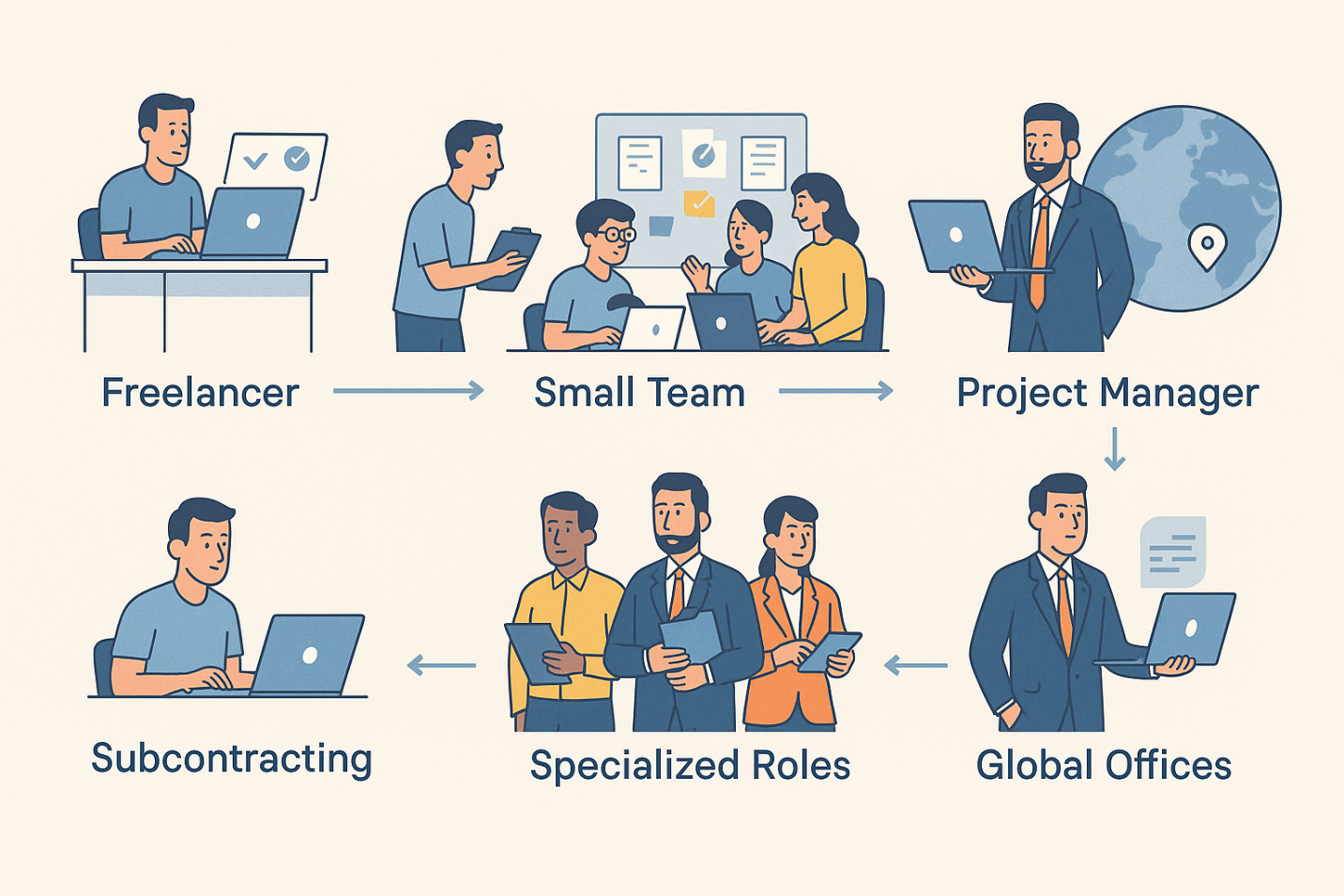
This article is inspired by a message we received from Protemos competitors:
“From our conversations with LSPs, most TBMS tools fall into two categories:
- Too basic. They don’t cover the whole business
- Too complex & expensive. Hard to use, with hidden costs
That’s why we built something easy to use, fairly priced, and covering all the essentials (projects, vendors, clients, invoicing).”
Then comes a call to action and an invitation for a demo. We would like to elaborate on this, because it’s quite manipulative.
“Too basic — they don’t cover the whole business”
The first question is: what does “the whole business” mean? For some translation companies, it’s a single linguist working alone; for others, it’s a large LSP team with a complex organizational structure involving corporate management, HR/resource management, sales, multiple workflows for different job types, diverse client requirements, and so on. Larger LSPs may also have offices around the world, operating under different legal systems and cultural norms.
Even in the simplest cases, it is unrealistic to expect any Translation Business Management System (TBMS) to cover everything. You may manage projects, vendors, invoices, and payments in an LSP software platform, but you’ll still use email or messaging apps for communication, and government software for tax reporting. No solution is ever truly “complete.”
So the real question is: which parts of your processes are covered by a TBMS? The more, the better, but it’s up to you to decide how much automation and project management you actually need.

How processes evolve, and why tools must follow
Let’s start with the basics. Imagine a freelance linguist who does not subcontract. All he needs is to track jobs and deadlines, send invoices on time, and ensure payments are received. Even an Excel file can handle this. True, it won’t create PDF invoices, notify you of overdue payments, or produce sales charts, but for a single-person business with limited data, it may feel sufficient.
Now imagine the freelancer subcontracting another linguist due to high workload. Suddenly, he needs to assign jobs, send instructions, check quality, manage deadlines, issue purchase orders, and pay the subcontractor (even if the client delays payment). Here, Excel already starts to stretch its limits, and administration gets more complicated.
Next step: a small team of translators and editors, with multiple assignments running simultaneously. Now you must coordinate workloads, track deliveries, and handle quality assurance. Spreadsheets begin to fail. Client projects aren’t connected to vendor assignments, project balances aren’t visible, communication and file transfer require endless manual work, there are no deadline alerts, and no automated POs or invoices. While the business can still run without a TBMS, it becomes costly, stressful, and error-prone.
As the business grows further, you hire another project manager. A Translation Business Management System ensures consistency: new managers follow the same processes, and you can monitor their work through the system. Without a transparent TBMS, their work becomes a black box.
Later, as you scale, you need specialized roles: a Resource Manager, a Sales Specialist, and so on. This requires dedicated modules for vendor management, CRM/sales, and proper integration with project and finance modules.
At an even higher level, you might appoint a Production Manager, build multiple departments (Sales, Resources, Finance, Marketing, Engineering, etc.), and introduce multiple management layers. Everything must work together, which requires an even more advanced TBMS.
Finally, if you open offices on different continents, challenges multiply: new legislation, cultural differences, management practices. At this stage, you need a highly customizable Translation Business Management System, possibly with extra developments, to adapt to these diverse conditions.
Conclusion
At every stage described above, the definition of “too basic” or “too complex and expensive” changes. The best approach to selecting an LSP software platform or TBMS is to define your current needs while considering how your translation company may evolve over the next five years. Make a list of your company’s processes and look for a system that covers them. It will never be a 100% match — every business is unique, translation business included. But if it solves 80% of your challenges, it’s already a very strong option.

.png)
.png)
.png)

